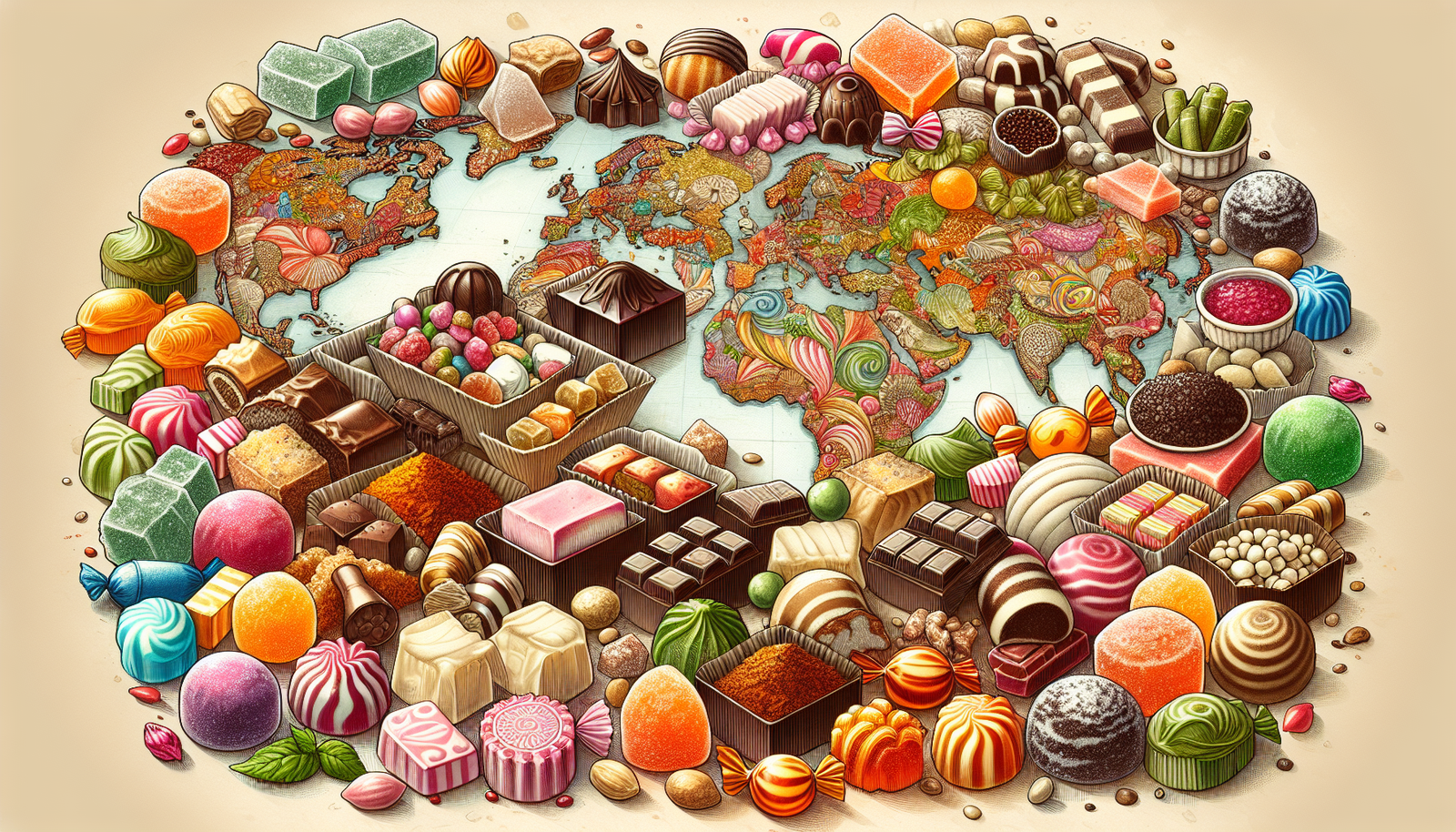
Sweet Treats Around the World: Discovering Candies from Different Cultures
There’s a universal language that transcends borders, and no, it’s not love—it’s the language of sweetness. From the bustling markets of Mexico to the quaint patisseries in France, candy plays a pivotal role in cultures around the globe.
Not just a treat for children, candies are a profound part of culinary traditions, offering us a glimpse into the soul of a culture. Embarking on a sweet journey around the world isn’t just about satisfying a sugar craving; it’s a path to understanding global cultures through their confectionery delights.
Exploring the Sweet Side of Culture
Imagine unwrapping the colorful history of candies and finding stories of celebration, tradition and innovation. Each country’s candy traditions are a reflection of its history, climate and cultural preferences. For example, the bright, spicy flavors of Mexican candies, like tamarindo and chamoy, tell a tale of indigenous ingredients and Spanish influences.
Across the ocean, Turkish delight, or lokum, offers a taste of the Ottoman’s sophisticated palate, with its delicate flavors of rosewater, lemon and mastic. These sweets are not just for casual snacking but are deeply embedded in the cultures’ fabric, playing a starring role in festivals, weddings and seasonal celebrations.
A Taste Tour of Iconic International Candies
Delve into the diverse world of candies, and you’ll discover that for candy lovers everywhere, there’s no shortage of flavors to explore. Journey through Europe, and you’ll be greeted by the luxurious textures of Belgian chocolates and the zesty zing of Italian limoncello candies. Venture further to Asia, and the landscape shifts to the intriguing tastes of matcha-flavored treats from Japan and the milky sweetness of India’s barfis.
Each candy tells a story, whether it’s the artisanal craftsmanship of European chocolatiers or the age-old recipes that produce the myriad of flavors in Asian sweets. This worldwide tour of candies is not just about savoring flavors but about savoring the rich cultural histories they represent.

How Candies Differ Around the Globe
The world of candies is as diverse as it is wide, with every culture adding its own signature to its confections. The difference doesn’t lie in sweetness alone but also in the ingredients, textures and meanings imbued in these delightful treats.
For instance, the Middle Eastern halva, made from tahini or other nut butters, offers a distinctly different texture and flavor profile from the sugary, fruit-flavored gummies popular in the United States. These differences highlight the abundance of natural resources, culinary creativity and cultural preferences in play, making the exploration of international candies a never-ending adventure.
The Universal Language of Candy
Despite the myriad of flavors, ingredients and textures, one thing remains constant: the joy that candies bring. There’s something inherently celebratory and comforting about unwrapping a piece of candy, a feeling that’s shared worldwide.
Beyond the sweetness, candies are a vehicle for cultural exchange, offering us a taste of the unfamiliar and bringing us closer to understanding each other’s traditions. The global candy market is a reflection of humanity’s shared love for sweet treats, a testament to the universal appeal of a little bit of sugar. In exploring candies from different cultures, we’re reminded of our shared humanity – and our collective sweet tooth.




